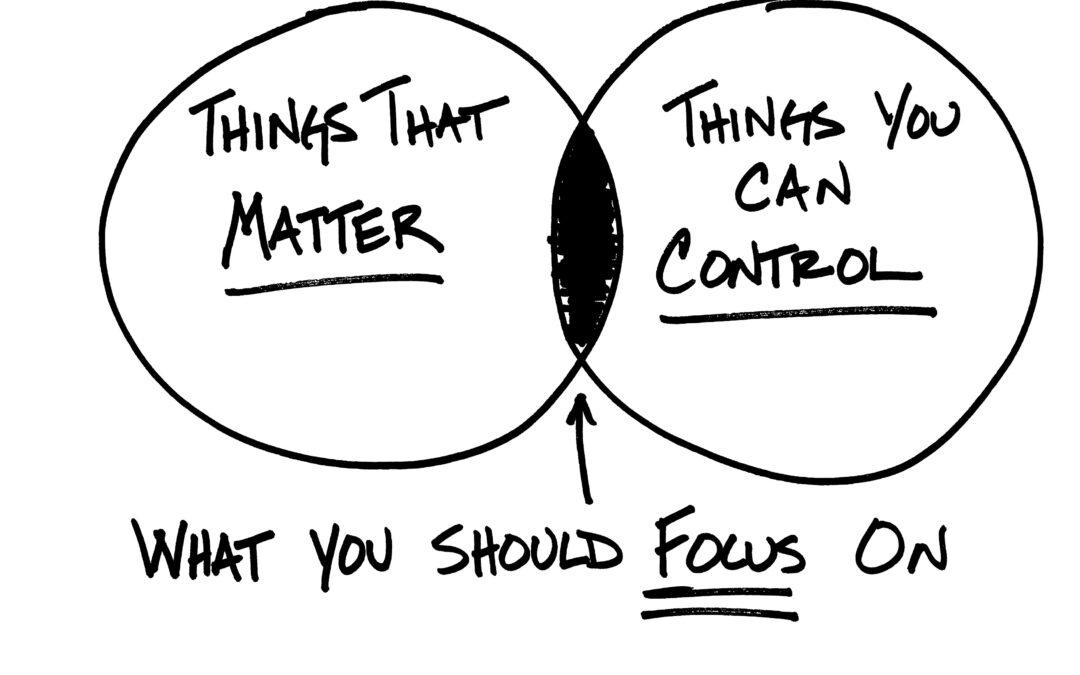Retirement might seem like a distant dream when you’re in the thick of your 9-to-5 grind, but let’s be honest—we all want to kick back and enjoy our golden years without financial stress. The tricky part? Navigating the ups and downs of a volatile market. If the rollercoaster of stock prices and economic news headlines has you wondering how to optimize your retirement savings, you’re not alone. The great news is there are plenty of smart strategies you can use to keep your portfolio on track, even when the market feels like it’s all over the place. In this article, we’re gonna dive into some practical tips and tricks to help you make the most of your hard-earned money, ensuring you’ll be sipping margaritas on the beach instead of pinching pennies. So grab a coffee, settle in, and let’s get savvy about your retirement savings!

Riding Out Market Waves: Smart Strategies to Keep Your Nest Egg Safe
Weathering the ups and downs of the market can feel like a rollercoaster ride, but there are practical strategies that can keep your retirement savings resilient. Start by diversifying your investments. Spreading your money across different asset types like stocks, bonds, and real estate can help mitigate risk. Think of it as not putting all your eggs in one basket. Additionally, maintaining an emergency fund for unexpected situations provides a safety net, so you won’t have to dip into your retirement savings prematurely.
Another savvy approach is to adjust your asset allocation as you near retirement. It’s wise to gradually shift from riskier investments like stocks to more stable ones like bonds. Consider employing dollar-cost averaging, which means investing a fixed amount regularly regardless of market conditions. This method can help smooth out the highs and lows of investing over time. To make these strategies easier to follow, here’s a handy table:
| Strategy | Key Benefit |
|---|---|
| Diversification | Reduces overall risk |
| Maintain Emergency Fund | Provides financial cushion |
| Adjust Asset Allocation | Aligns with risk tolerance |
| Dollar-Cost Averaging | Smooths out market volatility |

Diversify Like a Pro: Why You Can’t Put All Your Eggs in One Basket
Imagine investing all your savings into a single stock, and then that company faces a downturn—yikes! Spreading your investments across different assets ensures that you’re not vulnerable if one investment takes a hit. By diversifying, you’re effectively creating a safety net for your hard-earned money. Here are some smart ways to diversify:
-
- Stocks: Invest in multiple sectors like technology, healthcare, and energy.
-
- Bonds: Mix government and corporate bonds to balance risk and return.
-
- Real Estate: Consider real estate investment trusts (REITs) for property exposure without buying physical real estate.
-
- Mutual Funds and ETFs: These provide instant diversification across various asset classes.

Stay Cool: How to Make Market Volatility Work for You
Market ups and downs can feel like a rollercoaster, but the right strategies can turn those dips and peaks into opportunities. Consider spreading your investments across various types of assets to cushion the blow of market fluctuations. This approach, known as diversification, can help shield your retirement savings from severe losses. Think about investing in:
-
- Stocks – Higher risk, but potentially higher returns.
-
- Bonds – Safer, steadier returns.
-
- Mutual Funds – A mix of different stocks and bonds.
-
- Real Assets – Like real estate or commodities.
Another key to thriving in a volatile market is staying consistent with your contributions. Automate your savings so you’re putting away a set amount regularly, regardless of market conditions. This practice, known as dollar-cost averaging, can lower the average cost of your investments over time. Also, keep an eye on fees and make sure you’re not overpaying for management costs. Here’s a simple comparison table to illustrate how small fee differences can add up:
| Annual Fee | Impact on $100,000 over 20 years |
|---|---|
| 0.25% | $110,900 |
| 1.00% | $87,200 |

Boost Your Savings: Unexpected Tips to Grow Your Retirement Fund
-
- Reinvest Dividends: Instead of taking the cash from dividends, opt to reinvest them. This can lead to higher returns over time. Many brokerage accounts offer a Dividend Reinvestment Plan (DRIP) to make this process seamless.
-
- Peer-to-Peer Lending: Consider lending platforms where you can invest in personal loans. While there are risks, these can sometimes offer better returns compared to traditional savings accounts.
-
- Side Hustles: Use any extra income from a side job or freelance gigs directly to your retirement fund. Small amounts can grow significantly when invested over the long term.
The journey to a substantial retirement fund often involves more than just cutting expenses and saving diligently. Here’s a closer look at some unique strategies:
| Strategy | Benefit |
|---|---|
| Employer Match | Maximize any employer matching contributions. It’s like free money! |
| Roth IRAs | Contributions are made with after-tax dollars, so withdrawals are tax-free. |
| Real Estate | Diversify by investing in rental properties or real estate funds. |
Q&A
Q&A:
Q: Hey, I’m really worried about the current market volatility. How can I safeguard my retirement savings?
A: Totally understandable—market volatility can be nerve-wracking! The first thing you should do is avoid making any knee-jerk reactions. Panic selling can lock in losses, which is something we definitely don’t want. Instead, think long-term and diversify your investments. By spreading your money across different asset classes like stocks, bonds, and real estate, you reduce your risk.
Q: Got it! So, diversification is key. What else should I consider doing?
A: Absolutely! Along with diversification, pay attention to your asset allocation. This means deciding what percentage of your portfolio should be in stocks, bonds, and other investments. Adjust your allocation based on your age, risk tolerance, and retirement timeline. Typically, the closer you are to retirement, the more conservative you should be.
Q: Interesting. How often should I be reviewing my retirement portfolio?
A: Good question! It’s crucial to review your portfolio at least annually, but during volatile times, you might want to check in a bit more frequently—say, every quarter. However, resist the urge to make changes too often because this could lead to over-trading.
Q: I’ve been hearing a lot about dollar-cost averaging. Can that help during volatile markets?
A: Oh, yes! Dollar-cost averaging involves consistently investing a fixed amount of money at regular intervals, regardless of market conditions. This strategy can help you buy more shares when prices are low and fewer when prices are high, smoothing out the average cost of your investments over time.
Q: Sounds like a good strategy! What about my 401(k)? Anything specific I should do there?
A: Great that you’re thinking about your 401(k)! Make sure you’re contributing at least enough to get your employer’s match if one is offered—that’s free money! Also, periodically review the fund options within your 401(k) to ensure they align with your risk tolerance and retirement goals.
Q: How should I handle my emotions during market downturns? It’s tough not to panic!
A: Oh, for sure—staying calm is easier said than done! But try to keep your emotions in check by focusing on your long-term goals rather than short-term market fluctuations. Some people find it helpful to work with a financial advisor for this reason; they can offer an objective perspective and keep you on track.
Q: Any final tips for someone looking to optimize their retirement savings in these uncertain times?
A: Definitely! Stay informed but don’t get too bogged down by daily financial news. It’s a marathon, not a sprint. Make sure to have an emergency fund so you’re not forced to dip into your retirement accounts for unexpected expenses. And remember, consistency is key—keep contributing to your retirement accounts, stick to your plan, and you’ll be in good shape.
Q: Thanks! I feel a bit more prepared to handle the ups and downs now.
A: You’ve got this! Just keep calm, stay diversified, and think long-term. Your future self will thank you!
To Wrap It Up
And there you have it! Navigating the choppy waters of a volatile market to optimize your retirement savings might seem daunting, but with a solid plan and a bit of patience, it’s totally doable. Remember, the key is to stay informed, diversify your investments, and not let short-term fluctuations shake your long-term goals.
So, whether you’re just starting to build your nest egg or giving your current strategy a makeover, take these tips to heart and keep your eye on the prize. After all, retirement is supposed to be your golden years—make sure your savings strategy gets you there without too many bumps along the way.
Got some killer tips of your own? Or maybe some burning questions we didn’t cover? Drop them in the comments below—we’d love to hear from you! Until next time, happy saving!


 Navigating retirement savings in a market that feels like a roller coaster?
Navigating retirement savings in a market that feels like a roller coaster?  Don't stress! It's all about diversifying, staying the course, and rebalancing your portfolio regularly. Smart moves = smooth sailing towards golden years!
Don't stress! It's all about diversifying, staying the course, and rebalancing your portfolio regularly. Smart moves = smooth sailing towards golden years! 

